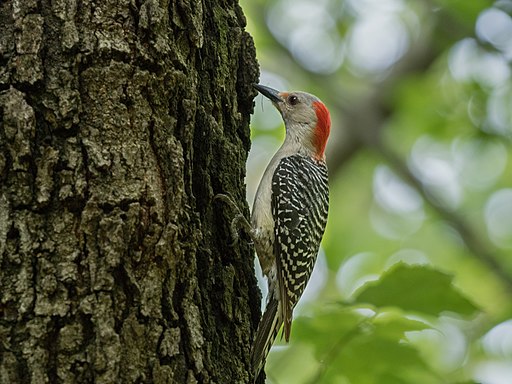Unveiling the Keys of Woodpeckers: Actions, Environment, and Extra
Woodpeckers, with their one-of-a-kind habits and specialized adaptations, have actually long captivated researchers and nature fanatics alike. By uncovering the mysteries surrounding woodpeckers' habits and environment options, a deeper understanding of these bird wonders emerges, providing a glance right into their remarkable world.
Woodpecker Habits Insights
In checking out woodpecker behavior, a fascinating display screen of specialized abilities and adjustments arises, clarifying their amazing eco-friendly specific niche - Woodpeckers in Florida. Woodpeckers, known for their distinct drumming on trees, have a selection of behavioral attributes that add to their survival and success in their atmosphere. One essential habits is their drumming, which offers several purposes such as interaction, establishing area, drawing in friends, and situating food resources. This rhythmic pecking also showcases their remarkable toughness and endurance, as they can hammer away constantly at high speeds without creating damage to themselves.
In addition, woodpeckers display an one-of-a-kind feeding habits identified by their ability to remove insects from tree bark using their specialized beaks. Their lengthy, barbed tongues aid in catching target, while their strong neck muscular tissues provide stability and accuracy throughout pecking movements. This feeding technique enables woodpeckers to accessibility hidden insect larvae and extract them with impressive performance.
Environment Preferences and Option
What factors affect the habitat choices and selection of woodpeckers? Woodpeckers are very adaptable birds understood to inhabit various atmospheres worldwide. They do display choices for certain environment characteristics. One critical element influencing woodpecker habitat choice is the schedule of suitable nesting websites. Woodpeckers generally like woodlands with a mix of mature trees that supply sufficient possibilities for dental caries excavation. These dental caries serve as crucial nesting and roosting websites for woodpeckers and are essential for their reproducing success.
Additionally, woodpeckers show a choice for habitats with an abundant supply of food resources. They are mainly insectivorous, preying on beetles, ants, larvae, and other insects located in rotting wood or tree bark. Woodpeckers often tend to favor wooded locations with a diverse insect population to fulfill their nutritional requirements.
Moreover, the visibility of dead or rotting trees is another vital consider woodpecker habitat selection. These trees not just provide food resources but additionally use ideal substratum for tooth cavity excavation. Dead trees are vital for the maintenance of healthy and balanced woodpecker populaces, as they play a vital function in the woodpeckers' life cycle and community dynamics.
Feeding Practices and Diet Structure
Woodpeckers show a specialized feeding behavior focused on foraging for pests within numerous habitats. In addition to bugs, woodpeckers likewise consume tree sap, fruits, nuts, and seeds, including variety to their diet depending on the season and schedule of food resources.
The foraging strategies of woodpeckers are well-adapted to their arboreal way of living (Woodpeckers in Florida). Their useful link ability to dig deep into timber not only gives them with food however also helps in producing nesting cavities and establishing regions. Woodpeckers play a critical role in keeping this website the wellness of woodlands by controlling insect populaces and helping in the decay of timber. Comprehending their feeding practices and diet make-up is vital for preservation initiatives focused on preserving these special and valuable birds.
Drumming Sounds and Interaction
Making use of rapid drumming sounds on numerous surface areas, woodpeckers use an unique form of communication to indicate area borders and draw in friends. This drumming actions is not just a way of interaction but likewise serves as a method for woodpeckers to establish their existence within a certain location. The intensity, speed, and pattern of the drumming can communicate vital info to other woodpeckers in the area.
Woodpeckers make use of drumming sounds to introduce their existence in an area and to caution off prospective trespassers. The loud and repeated nature of the drumming works as a clear signal to various other woodpeckers that the area is currently claimed. This aids in reducing disputes and lessening physical conflicts in between individuals.

Survival Adaptations and Specialized Anatomy

Final Thought
To conclude, browse around this web-site woodpeckers display one-of-a-kind habits, such as drumming sounds for interaction, and have specialized composition for survival in their selected environments. Their feeding practices and diet composition better demonstrate their adaptability to numerous settings. By recognizing these facets of woodpeckers, researchers and preservationists can better secure and preserve these interesting birds and their ecological communities.
Comments on “Native Woodpeckers in Florida: A Guide to Variety and Behaviors”